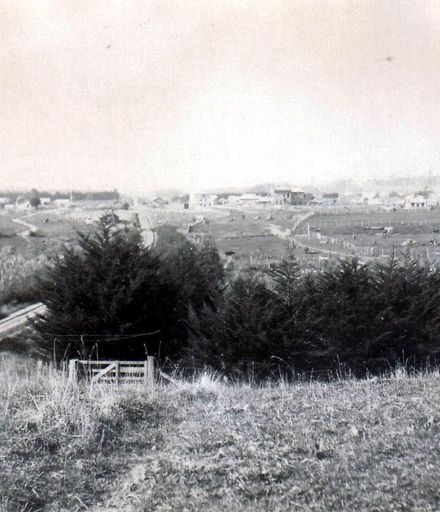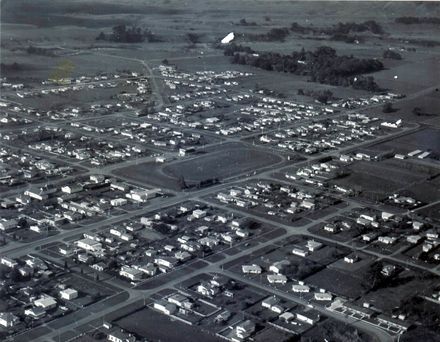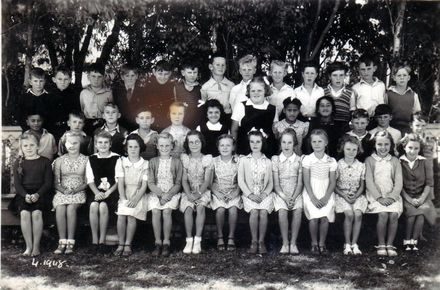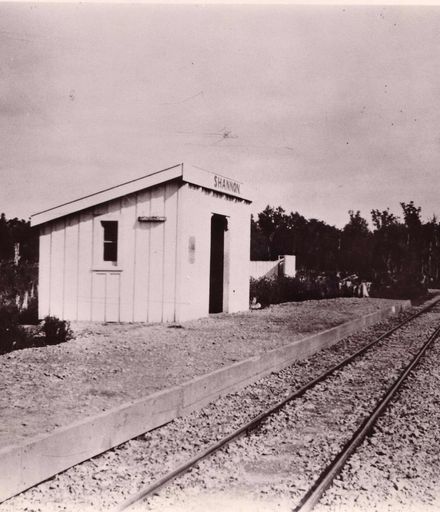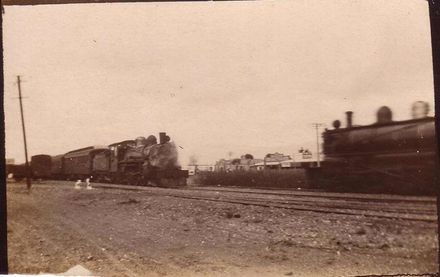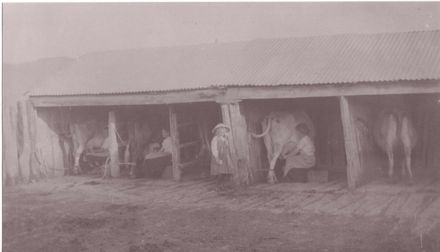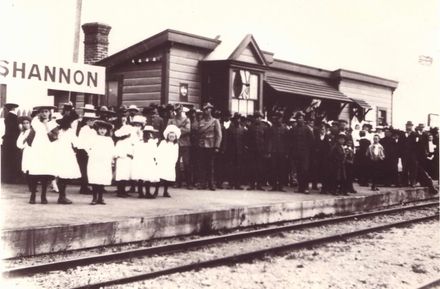The photos have the date incorporated as part of the photo.
Penciled in top right corner – K. McAloon
Written on back with blue ballpoint pen - K. McAloon 45.231
Additional writing on back is not related to this project (cardboard is being reused).
Shannon’s Townscape 1983 {Display Sheet 1} 7 colour photo prints – mounted (with typed notes) on large red cardboard sheet
Photo # 1 – Plimmer Terrace (State Highway 1) at Stafford Street intersection. ” # 2 – Plimmer Terrace (State Highway 1) looking south to shopping area. ” # 3 – Plimmer Terrace (State Highway 1) another view looking south to shopping area. ” # 4 – Albion Tavern (Hotel). ” # 5 – Club Hotel, view from Plimmer Terrace. ” # 6 – Club Hotel, view from Vance Street to Plimmer Terrace. ” # 7 – Ballance Street, looking toward Tararua Ranges.
Typed notes [complete with errors] - Background: Shannon was originally developed as part of the 1880 Manawatu-Wellington Railway Companies plan to connect Wellington and Palmerston North. However Shannons growth was not as spectacular as hoped and recently the decline of New Zealand Railways and a recession in Industry has caused a decline in Shannon.
Photos 1, 2 & 3,: Driving or walking down the main street of Shannon reveals the scenery in a series of jerks. The curving nature of the street and encroaching vegetation on the right-hand side has split this into a series of existing and emerging views so a feeling of here and there is created. There is a contrast between the vegetated side of the street and shops on the other side, seperated by a wide and busy street. Not only does this main street serve Shannon shoppers but it is a main thoroughfare. Typical of New Zealand towns power wires are exposed forming part of the townscape. They follow the main street supplying the shops with power. This creates a sence of unity.
Photo 4: This ‘striking’ building is one of Shannons two largest buildings (both hotels). Its simple style and its wooden material is typical of early New Zealand buildings. Its colours complement its design and the period in which it was built. Its size is proportionately larger than the surrounding buildings. Although still popular with patrons it was probably built at a time when Shannon was more prosperous. The four peaks at the top of the building increase the perceived granduer of the building. The modern name sign is clear yet doesn’t disturb the buildings style. The majestic stature of this building is in keeping with the important role it has to play in such a small community.
Photos 5 & 6: The Club Hotel in Shannon is similair in shape to the first Hotel, both are large buildings ‘wrapped’ around the corners. This one is much plainer its massiveness is excentuated by the one colour it is painted. The side view reveals corrigated iron. Perhaps thebuilders envisaged that the growth of Shannon would mean other buildings nextdoor. Once again a wooden building typical of early New Zealand.
photo 7: Upon turning the corner a ‘hole’ boring through the town is exposed. The wide street gives nonsence of unity to this part of the town. There isn’t even any power wires crossing the street. The buildings look insignificant Only the mountains block this tunnel.
Any use of this image must be accompanied by the credit “Horowhenua Historical Society Inc.”



